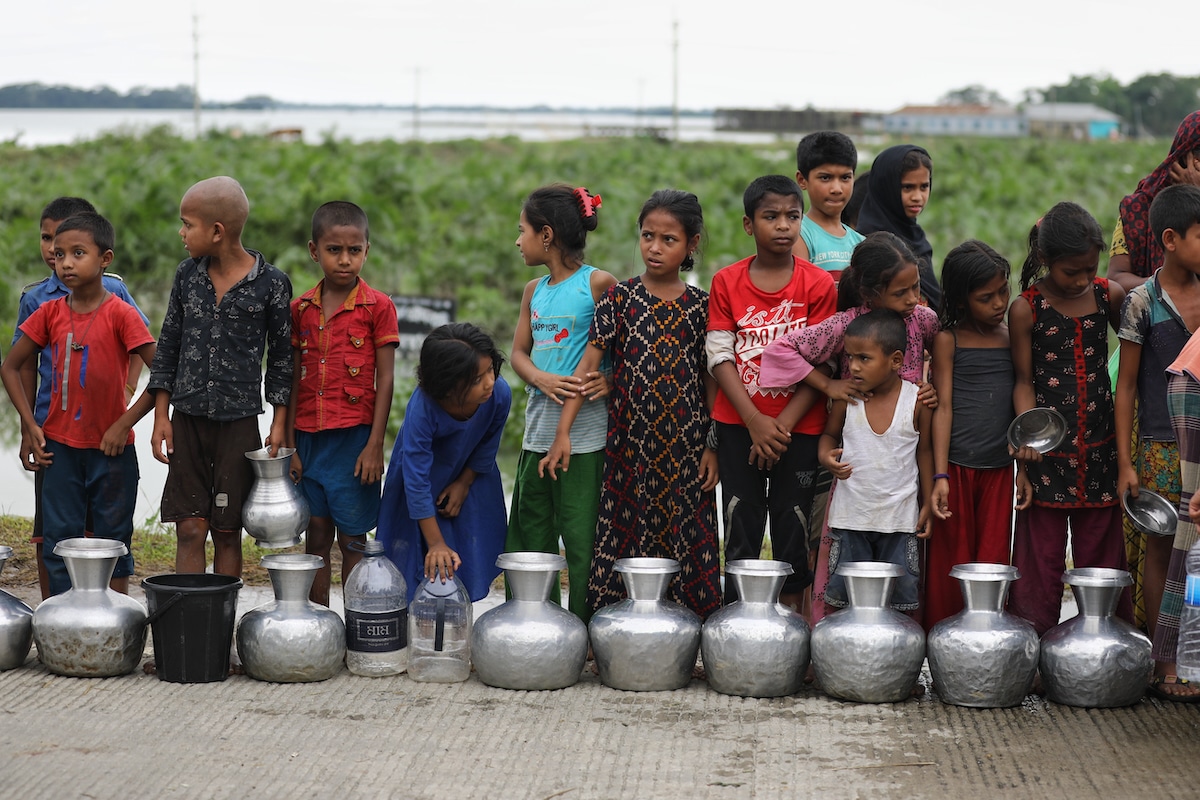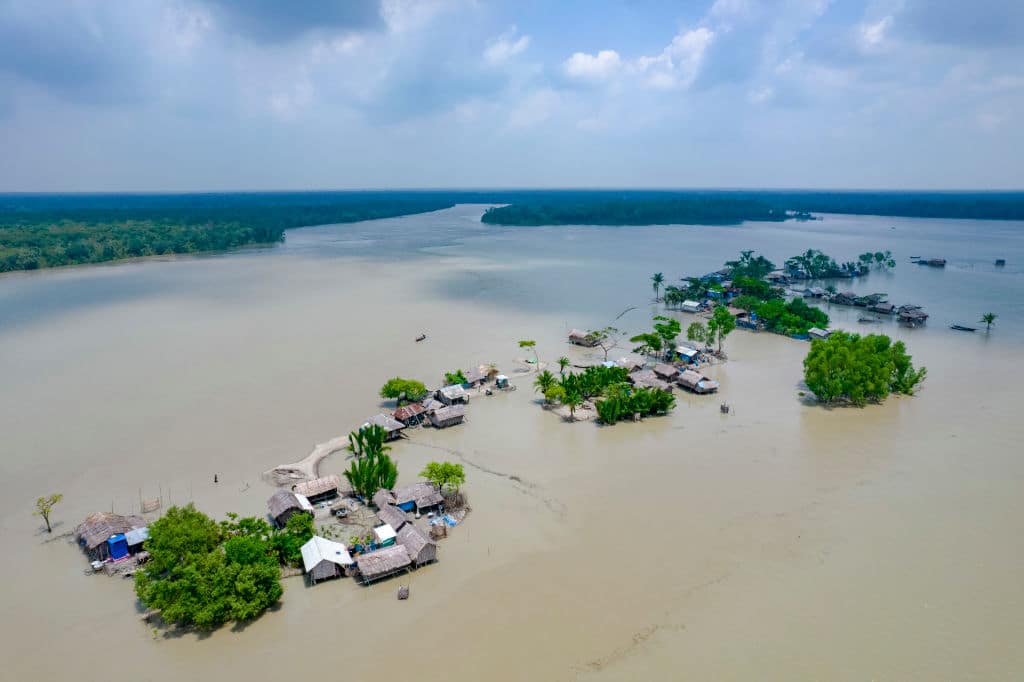Ecowatch
Arsenic in Bangladesh Drinking Water to Rise With Sea Levels

Children wait in line to collect safe drinking water in a flooded area in Companiganj, Sylhet, Bangladesh on June 21, 2022. Syed Mahamudur Rahman / NurPhoto via Getty Images
 Why you can trust us
Why you can trust us
Founded in 2005 as an Ohio-based environmental newspaper, EcoWatch is a digital platform dedicated to publishing quality, science-based content on environmental issues, causes, and solutions.
Climate-induced sea level rise will lead to dangerous levels of arsenic being released into Bangladesh’s drinking water, putting tens of millions of people in the country at greater risk of cancer, new research by scientists from Norwich University has found.
Scientists say global heating due to human-caused climate change will lead to extreme weather, sea level rise and flooding, which will speed up the release of arsenic into the well water nearly half the country relies on.
“Over 165,000,000 people live in Bangladesh; approximately 97% of Bangladeshis drink well water. Approximately 49% of Bangladesh’s area has drinking well water with arsenic (As) concentrations that exceed the 10 micrograms per liter (μg/L) World Health Organization (WHO) guideline,” the authors of the study wrote.
The researchers said this will escalate the country’s current public health crisis, reported The Guardian.
“Chronic arsenic poisoning from drinking water… is a real problem, not a theoretical exercise,” said Dr. Seth Frisbie, research lead and a Norwich University emeritus professor of chemistry, as The Guardian reported. “I once walked into a village where no one was over 30 years old.”
The study, “Sea level rise from climate change is expected to increase the release of arsenic into Bangladesh’s drinking well water by reduction and by the salt effect,” was published in the journal PLOS One.
The problem of arsenic water contamination in Bangladesh started in the 1970s, when the country had one of the highest infant mortality rates caused by surface water pollution. A program of boring into sedimentary rocks to access clean water had been sponsored by aid agencies from the United Nations and NGOs. The wells lowered the rates of infant mortality, but in the following two decades it was obvious that the water had naturally high arsenic levels.
Jamie Williams, senior policy advisor with NGO Islamic Relief, said the country has been experiencing water shortages because of pesticide pollution, especially in fishing regions, reported The Independent.
“Bangladesh is one of the most vulnerable countries to climate change due to its population density, and limited low-lying land area dominated by major rivers that drain the Himalayan mountains and foothills,” Williams told The Independent. “Many people are landless and forced to live on and cultivate flood-prone land; waterborne diseases are prevalent.”
Bangladesh had its first chronic arsenic poisoning case from drinking well water in 1993, which WHO described as the “largest mass poisoning of a population in history,” The Guardian said.
According to Frisbie, sediments washed down from the uplift of the Himalayas contain arsenic.
“So all the sediments from the Ganges, Brahmaputra, Meghna, Irrawaddy [and] Mekong river basins are rich in naturally occurring arsenic,” Frisbie said. “It wasn’t a problem when people drank surface water, because the surface water is in communication with the oxygen in the atmosphere and that makes the arsenic insoluble and removes it from the water. But the deep well water does not communicate as well with the oxygen in the atmosphere. And that’s why all of a sudden giving people access to these deep water wells has been a tremendous public health crisis.”
Frisbie said approximately 45 percent of the country’s wells have water with five times or more the maximum WHO limit for arsenic.
Arsenic builds up in organs inside the body, causing cancers. Chronic arsenic poisoning can also manifest as keratinization on people’s palms and the soles of their feet.
“My current estimate is about 78 million Bangladeshis are exposed, and I believe a conservative estimate is that about 900,000 Bangladeshis are expected to die from lung and bladder cancer,” Frisbie said, according to The Guardian.
The climate crisis will make the situation worse, as sea level rise is predicted to cause more flooding in the country. This will trigger a process called “reduction,” which will alter aquifer chemistry and lead to greater arsenic leaching from sediment.

Sea level rise will also cause aquifers to be inundated with seawater, increasing their salinity. That will speed up the leaching of arsenic through a process called “the salt effect.”
The effects of climate change on the underlying chemistry of water drawn from aquifers is not only a problem in Bangladesh.
“These chemical processes are global,” said Frisbie in The Guardian. “There’s this reduction of arsenic in Manchester, there’s the salt effect in Louisiana [because of] floods like Hurricane Katrina. So because these are universal chemical processes, this is a global problem.”
Subscribe to get exclusive updates in our daily newsletter!
By signing up, you agree to the Terms of Use and Privacy Policy & to receive electronic communications from EcoWatch Media Group, which may include marketing promotions, advertisements and sponsored content.
Source
Disclaimer: No copyright infringement intended. All rights and credits reserved to respective owner(s).












